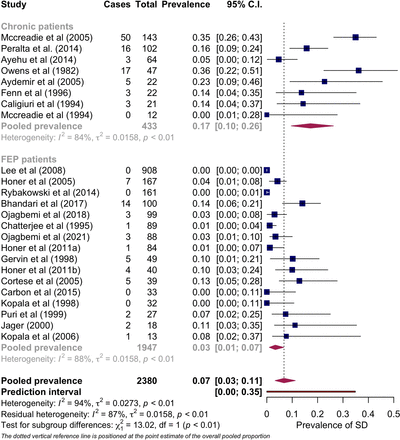In today’s digital-first world, technology and fashion are no longer separate entities. Artificial intelligence (AI) has made its way into the fashion industry, revolutionizing how brands design, produce, and market their collections.
Among the most prominent AI applications, ChatGPT—developed by OpenAI—stands out as a powerful tool that is reshaping customer interactions, trend forecasting, and even fashion design.
AI’s role in fashion goes far beyond automating processes. It is becoming a creative partner to designers, an efficient assistant to marketers, and a personalized service provider for consumers. Let’s dive into the real-world impact of AI and ChatGPT on fashion, backed by factual information and current trends.
AI’s Role in Fashion: More Than Just a Trend
AI is becoming an integral part of the fashion industry, allowing brands to streamline processes, increase sustainability, and better understand consumer behavior. The rise of AI in fashion isn’t just a trend—it’s a complete transformation.
AI in Fashion Design: A Creative Partner
Artificial intelligence is playing a significant role in fashion design by analyzing trends, materials, and consumer behavior. Companies like Tommy Hilfiger and Stitch Fix have integrated AI into their design processes to make them more data-driven and efficient.
Tommy Hilfiger collaborated with IBM and the Fashion Institute of Technology (FIT) on a project called “Reimagine Retail.” This initiative uses AI to analyze real-time data from social media, fashion shows, and consumer feedback, helping the brand stay ahead of trends and create designs that resonate with consumers.
On the other hand, Stitch Fix uses AI-powered algorithms to recommend clothing items to customers based on their preferences, previous purchases, and style quizzes. While human stylists still play a role, AI takes the heavy lifting out of analyzing large amounts of data, creating a more personalized shopping experience for the customer.
Trend Forecasting: How AI Predicts Fashion’s Future
One of the most powerful applications of AI in fashion is its ability to predict trends. AI systems can scan billions of data points—from social media posts to runway images—to identify patterns and anticipate what will be trending next season. This process, known as trend forecasting, is becoming increasingly accurate with the help of machine learning.
Brands like Zalando, an e-commerce giant in Europe, have embraced AI trend forecasting to inform their buying decisions. By analyzing customer data, browsing habits, and social media trends, Zalando’s AI algorithms provide insights that help the company stock the most relevant items, minimizing waste and unsold inventory.
ChatGPT in Fashion: Revolutionizing Customer Interaction.
While AI systems help with design and trend analysis, ChatGPT is transforming the way fashion brands communicate with their customers. ChatGPT’s ability to understand and respond to natural language has made it an invaluable tool for automating customer service and providing personalized experiences.
Automating Customer Service
Brands like H&M and ASOS have introduced AI chatbots to their online platforms, helping customers with inquiries, size recommendations, and order tracking. These AI-driven bots can handle a wide range of customer service tasks, from answering common questions to helping customers find the perfect fit. This not only speeds up response times but also allows human customer service teams to focus on more complex tasks.
In particular, ASOS’s AI chatbot uses machine learning to suggest products based on customer preferences and past purchases. By understanding the natural language and context of customer inquiries, these chatbots provide personalized recommendations that mimic the experience of shopping with a human stylist.
Virtual Shopping Assistants
Beyond customer service, ChatGPT and AI-powered systems are enhancing the online shopping experience by acting as virtual shopping assistants. These systems analyze customer preferences and browsing habits to recommend outfits, styling tips, and accessories that suit individual tastes.
Macy’s has adopted IBM’s Watson AI to power their Macy’s On Call virtual assistant, which helps customers navigate stores, find products, and get real-time inventory information. This kind of AI integration enriches the customer experience, making it smoother and more interactive.
AI and Sustainability in Fashion: A Critical Intersection
Sustainability has become a priority for many fashion brands, as consumers are increasingly conscious of the environmental impact of their purchasing decisions. AI plays a crucial role in helping brands meet sustainability goals by optimizing production, reducing waste, and encouraging more ethical practices.
Reducing Waste with AI
One of the biggest challenges in the fashion industry is overproduction, which leads to waste. AI helps solve this problem by providing demand forecasting, which uses historical data, customer behavior, and trend predictions to ensure that the right amount of stock is produced.
For example, H&M uses AI to predict which products will sell in certain regions and seasons, reducing the risk of excess inventory. By analyzing consumer preferences and past sales data, AI helps brands like H&M manufacture the exact amount needed, minimizing waste and improving profitability.
Ethical Sourcing and Transparent Supply Chains
AI is also being used to create more ethical supply chains. With consumers demanding more transparency, brands are using AI to track the entire lifecycle of a product, from raw material sourcing to production and shipping.
Brands like Everlane have built their reputation on transparency, sharing the costs of production, materials used, and the environmental impact of each product. While Everlane primarily relies on human transparency efforts, other brands are beginning to use AI-powered platforms to provide real-time information about their supply chains, offering customers a deeper understanding of the journey their clothes take before reaching them.
The Role of AI in Retail: Personalization and Immersive Shopping Experiences
AI is not just improving how clothes are designed or produced—it’s also changing how consumers shop. AI and machine learning are enabling personalized shopping experiences, virtual try-ons, and smart recommendations that tailor the entire retail process to individual shoppers.
Virtual Try-Ons: The Future of Shopping
Virtual try-ons, powered by AI and augmented reality (AR), are becoming a mainstream feature in fashion retail. Brands like Gucci and Nike have implemented virtual try-on technology that allows customers to see how shoes, clothing, or accessories will look on them without ever stepping foot in a store.
Gucci’s AR app lets customers try on sneakers and glasses through their smartphones, offering a more immersive and personalized shopping experience. Similarly, Sephora has integrated virtual try-ons for beauty products, enabling customers to test makeup virtually and get AI-powered recommendations for shades and products.
AI-Driven Personalization
AI systems also power product recommendations, making online shopping more intuitive. Platforms like Amazon and Stitch Fix use AI algorithms to analyze browsing behavior, purchase history, and preferences, providing personalized product suggestions that match individual customer tastes.
Zalando, for instance, has developed an AI-driven tool called Project Muze, which generates outfit ideas based on a user’s preferences. The AI tool draws inspiration from customer data, fashion trends, and past purchases to offer customized recommendations, creating a more personalized shopping journey.
AI in Fashion Marketing: Optimizing Campaigns and Consumer Engagement
AI is transforming the way fashion brands approach marketing, making it more data-driven, efficient, and personalized. By analyzing consumer data, AI tools enable brands to create highly targeted campaigns, optimize advertising spend, and increase engagement with customers.
Data-Driven Marketing Campaigns
Burberry, a luxury fashion brand, has embraced AI to optimize its marketing strategy. By analyzing customer data from social media and in-store behavior, Burberry’s AI platform identifies trends and personalizes its messaging. This allows Burberry to create marketing campaigns that resonate with specific customer segments, driving higher engagement and conversion rates.
Levi’s has also incorporated AI to enhance its digital marketing efforts. Using AI-powered tools, the brand tailors its advertising to individual consumers, ensuring that the right message is delivered to the right person at the right time. This targeted approach has improved Levi’s ad performance and increased ROI.
AI-Generated Content
AI can also generate content for fashion brands, from product descriptions to social media posts. AI tools like GPT-3 are capable of producing human-like text that matches the brand’s tone and style. This helps marketing teams create large volumes of content quickly and consistently, allowing them to focus on strategy and creative direction.
While most brands still rely on human copywriters, AI-generated content is becoming more prevalent, especially in fast fashion, where time-to-market is critical.
Looking Ahead: The Future of AI and ChatGPT in Fashion
As AI and ChatGPT continue to evolve, their influence on the fashion industry will only deepen. From creating more sustainable production processes to offering personalized shopping experiences, AI is set to redefine how fashion brands operate.
AI-Generated Fashion Collections
In the future, we may see AI playing an even bigger role in fashion design, potentially generating entire collections based on consumer data and current trends. While human creativity will always be central to fashion, AI can offer designers new tools to push boundaries and experiment with styles they might not have considered before.
Enhanced Customer Experiences
As AI-powered tools like ChatGPT become more sophisticated, brands will be able to offer even more personalized and immersive customer experiences. From virtual stylists to AI-generated trend reports, the possibilities are endless. The challenge will be finding the right balance between technology and human interaction, ensuring that AI enhances rather than detracts from the shopping experience.
At BelleHarris.com, we are embracing the future of fashion by integrating cutting-edge technology into our processes, ensuring that we deliver not only the latest trends but also a personalized shopping experience for every customer. With the help of AI-powered tools, we are able to offer curated collections tailored to your unique style preferences. Our focus on innovation allows us to deliver high-quality, affordable fashion that meets the demands of today’s tech-savvy consumers. Explore our collection today and experience how BelleHarris.com is at the forefront of fashion’s digital transformation.
Conclusion: AI and ChatGPT in Fashion—The Future is Here
The rise of AI and ChatGPT in the fashion industry is already having a profound impact, from creating more personalized shopping experiences to fostering greater sustainability and efficiency. Brands that embrace AI now will not only stay competitive but also shape the future of the fashion industry.
As we move further into the digital age, one thing is certain: AI is not a trend. It’s a transformative force that will continue to revolutionize the fashion world. Whether it’s through AI-driven design, virtual shopping experiences, or sustainable manufacturing processes, AI and ChatGPT are shaping a future where fashion becomes more inclusive, innovative, and responsible.
The future of fashion is here, and it’s powered by AI. Stay ahead of the curve and watch how AI continues to define the next generation of fashion.
Outbound Links:
Inbound Links:
Key terms:
AI in Fashion Industry: Artificial Intelligence (AI) is transforming the fashion industry by streamlining processes, enhancing design, and improving the overall customer experience.
ChatGPT in Fashion: ChatGPT, an AI-driven language model, is used in fashion to assist with customer service, provide personalized shopping recommendations, and generate engaging product descriptions.
Fashion Sustainability and AI: AI plays a pivotal role in promoting sustainability by optimizing supply chains, reducing waste, and enhancing production efficiency in the fashion sector.
Personalized Shopping with AI: AI tools analyze customer behavior and preferences to deliver personalized shopping experiences, including tailored product recommendations and styling advice.
AI-Powered Fashion Design: Fashion designers are utilizing AI to create innovative designs, predict consumer trends, and stay ahead in a rapidly evolving industry.
Trend Forecasting with AI: AI algorithms process data from social media, consumer habits, and fashion runways to forecast upcoming trends with accuracy.
AI-Driven Fashion Marketing: AI improves fashion marketing by analyzing consumer data, personalizing campaigns, and optimizing strategies for better engagement and conversions.
Virtual Try-Ons in Fashion: AI-powered virtual try-on technology allows customers to preview how clothes, accessories, or makeup products will look on them before making a purchase.
Sustainable Fashion Through AI: AI helps fashion brands achieve sustainability by reducing overproduction, optimizing material use, and promoting ethical sourcing.
ChatGPT and Customer Experience in Fashion: ChatGPT enhances customer experience by providing instant responses, personalized recommendations, and improved customer service interactions in the fashion industry.





